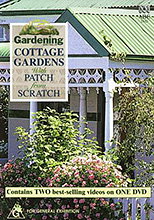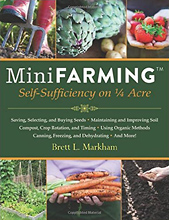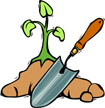
|
|
Grow Larger FruitHow to Prevent Small FruitsThe one thing that usually shocks new tree growers is the fact that the fruits produced by their tree are much smaller than the ones they’re used to seeing at the grocery store. “What is wrong with my tree?!”, “My God! What have I done!?” are some cried you may hear from the disgruntled tree grower. However, small fruits are a natural occurrence. But while smaller fruits might be what nature originally intended, it is possible to attain larger fruits without any genetic altering or added chemicals. It is only through advanced techniques that the professionals reach such large sizes with their fruits. Usually in the early stages of a fruit trees growing, veterans do something called “fruit thinning”. The theory behind this process is that with less fruits to pay attention to, the tree will be able to more efficiently send cells to the leftover fruits. When there are hundreds of little fruits on one tree, competing for the available materials necessary for growth, you will most likely just end up with a bunch of stunted fruits. To take care of this problem, simply pluck a third of the fruits extremely early on in the process. You should notice larger fruits that season. On almost any tree, the success of each individual fruit depends on the spacing. Usually there should not be any fruits within six to eight inches of each other. During the fruit thinning process, this is the distance you should generally aim for to optimize the amount of nutrition that each fruit gets. Any closer and you’ll find they are crowding each other out. Usually this is the first mistake that a new tree grower makes. Having tons of fruit starting to grow is not always a good thing! Sometimes small fruits are caused by conditions out of the gardener’s control. During the process of cell division that all new fruits go through, cool weather can be fatal to the largeness of your fruits. Likewise, if the weather is particularly cloudy very early in the season, then fewer carbohydrates will be available to your plants. Occasionally, if the factors are all against the well being of your fruit tree, then the fruits will drop to the ground before they are even ripe. A lack of water or certain nutrients, or excessive pests and diseases can also damage the growth of fruits. If you notice these things going on early in the season, you should do more fruit thinning than normal. Sometimes as much as three fourths of the fruits should come off, to allow full nutrition to those who remain. The best way to find out how to gain larger fruit sizes is to experiment. If your tree has been around for a while, there is almost nothing you can do to it to cause it to die or stop producing fruit. Just test different thinning techniques or anything you can think of to make the fruits larger. You might even head down to your local nursery and enquire about what they would suggest. They will be able to give you advice based on your region and specific tree, which is better than anything I could tell you. So don’t settle with small fruits. Go out there and find out what exactly you need to do to improve the size. Recommended ViewingRecommended Reading
See AlsoSustainable Organic Farming Content is copyright © Survival.org.au 2005-2026 All Rights Reserved. Terms of Use. Definitely read the disclaimer before trying anything from this website, especially including the practices and skills. This website uses affiliate links – this doesn't cost you any more, but I get a commission on purchases made through the website. As an Amazon Associate I earn similarly from qualifying purchases. |
|


